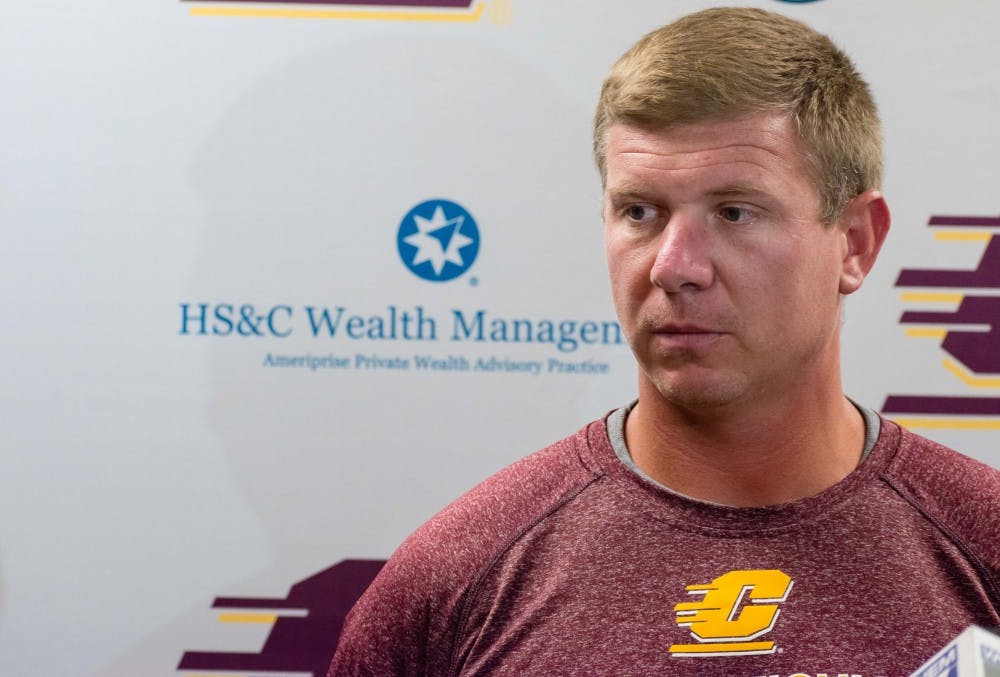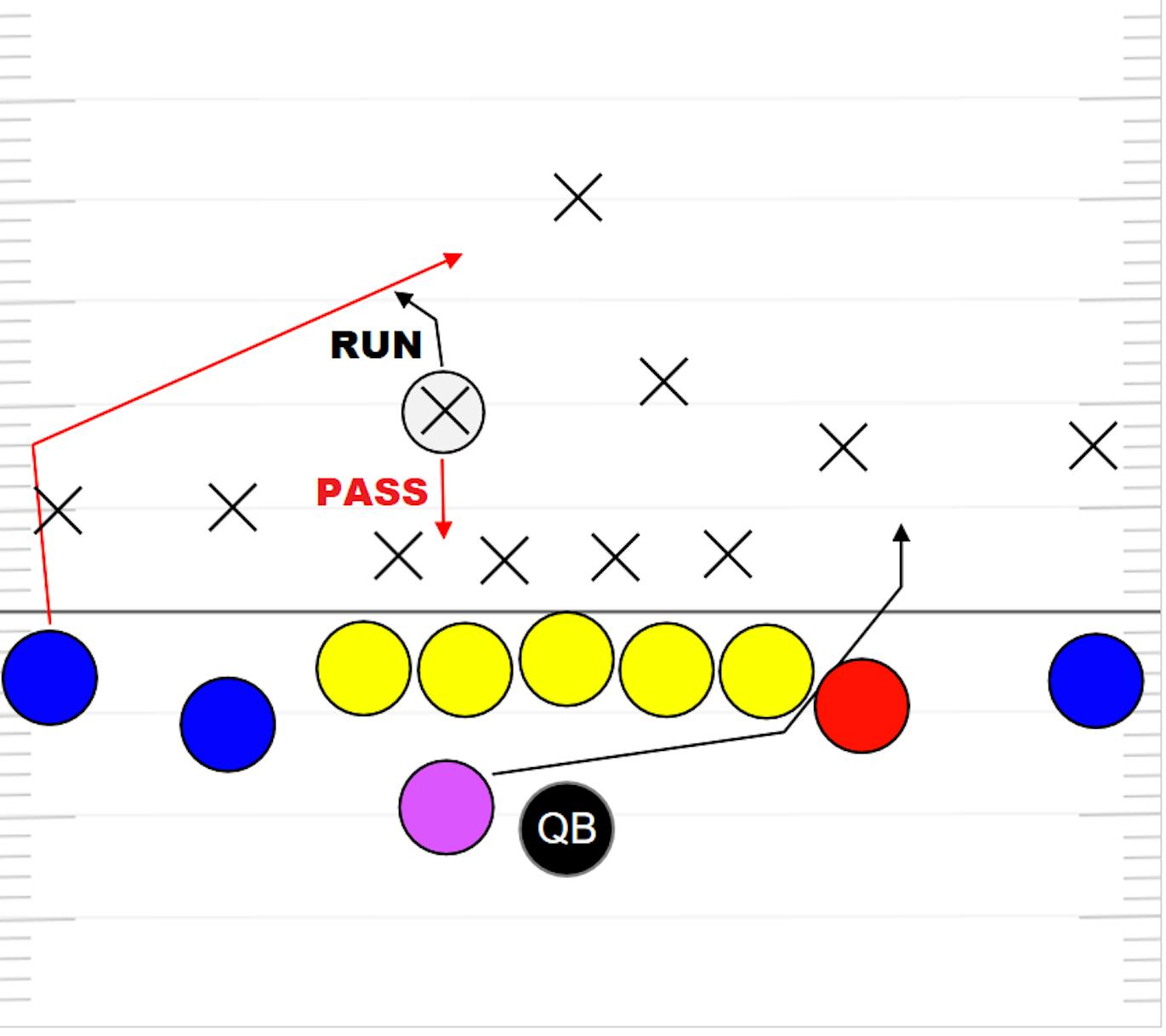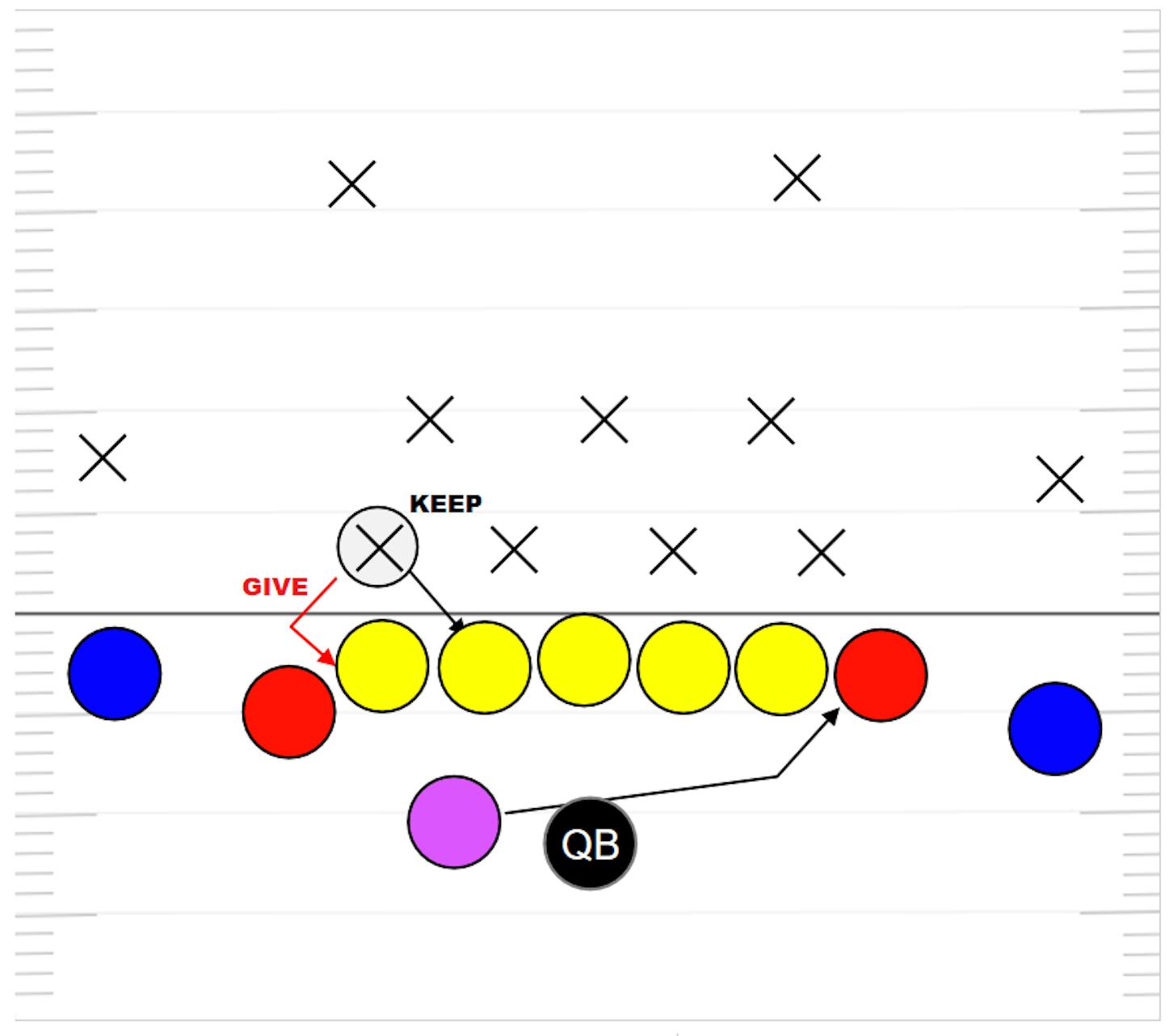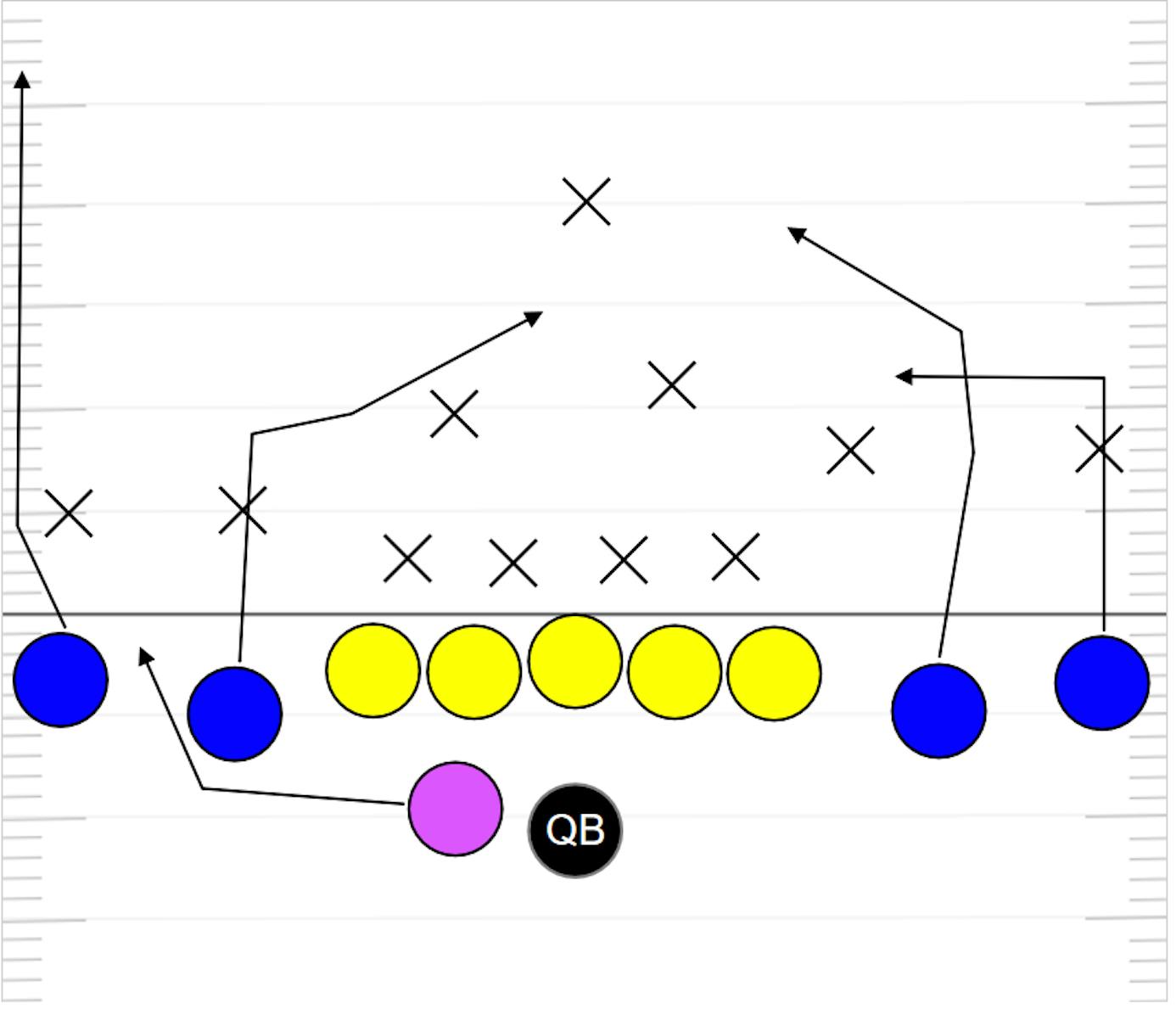Central Michigan offensive scheme: ‘Spread’ defense out, ‘read’ it, select ‘option’

When it comes to offense, the 2018 Central Michigan football team didn't have much, and there's no arguing that. The team's offense was ranked 128th of 130 Division I FBS programs.
However, to put it best, last year is over with, gone and fully in the rearview mirror.
A new era has begun.
What matters now is when fans get their first look at the 2019 Chippewas in the season opener Aug. 29 at Kelly/Shorts Stadium against Albany. According to the new coaching staff, people will see a revamped unit and one that should significantly increase output from a season ago.
CMU ran a similar scheme last season that it will this year, but the execution, or lack thereof, was the downfall and caused one of the nation’s worst offenses in 2018, averaging just 254.7 yards per game.
Run-Pass Option
Some call this offensive scheme the ‘read-option’ but it has become more known throughout college football as the run-pass option, or RPO for short.
Most, if not all, teams are running the RPO and have it set as their top scheme. McElwain reiterated that fact during the CMU football Media Day Aug. 16.
“Everyone else in the country runs it, so we will, too,” McElwain said.
Diving into understanding the concept, it's not that difficult to understand.
The quarterback must first find the defender (or two) he wants to base his read from. This defender is usually the defensive end or linebacker on the side the running back is lined up on.

For example, the quarterback can either look at the defensive end or linebacker on the left side because the running back (purple) is lined up on that side. In this case, since the idea is to throw the ball, the quarterback watches to see if the outside linebacker drops into coverage or comes towards the line of scrimmage. When the quarterback sees which way the linebacker goes, he will either give it to the running back or pull it back and throw the ball.
With that said, there is a third read that the quarterback has to make in order to make the play run successfully. He has to take a look at the defensive end on the same side as the linebacker. This read gives another choice – whether to hand it off or keep it. If the end moves toward the middle of the field, that means keep it. If he runs toward the outside, then that signals to the quarterback to hand the ball off.

All three reads need to be made in a quick amount of time, generally two or three seconds. When executed properly, it can lead to explosive plays.
Spread
The spread offense is also well known throughout the game of football in general, but it is widely used in the college game.
Conceptually, the offense takes after its namesake well. The wide receivers (three or more) spread the field and try to stretch the defense on the line of scrimmage. Teams generally use this scheme to use the passing game and work towards the run.

That said, the running game can be utilized to open up the passing game. Teams will try and establish their running game early on in games and that would theoretically allow the opportunity to utilize play-action passes to catch the defense trying to defend the run.
What they’re saying
In the first season of the McElwain era at CMU, he is attempting to follow the same philosophy that he did at Colorado State and Florida, getting the ball to the best players on the field.
“We try to not expose weaknesses but play to strengths,” McElwain said. “That’s what we have to figure it out and figure it out in a hurry. I like what we’re doing.”
Sophomore wide receiver Ja’Corey Sullivan said that he plays “X receiver,” meaning he is usually isolated.
That isolation, playing on an island, so to speak, plays to Sullivan’s strengths.
“This offense will be electrifying, that’s for sure,” Sullivan said. “There’s a lot more energy and a lot of big plays expected.”
Offensive coordinator Charlie Frye knows what he's doing, as he played quarterback at Akron and, at one point, owned the passing yardage record at Kelly/Shorts Stadium with 416 yards on Nov. 8, 2003. He then spent five seasons in the NFL playing for Cleveland, Seattle and Oakland.
Now, as the man leading the Chippewa offense, Frye said that compiling concepts and points of emphasis from places he has been was helpful to build the CMU offense. The same goes for most other coaches, who have spent time at various locations throughout the country.
“We’ve been taking what we’ve learned from places we’ve been and molding it into one product,” Frye said. “It’s not about the plays, but the details in the plays. We can draw up plays on the whiteboard all we want but we all know that’s not how it works.”






